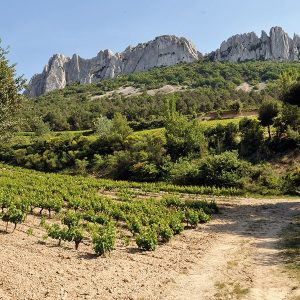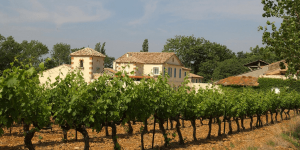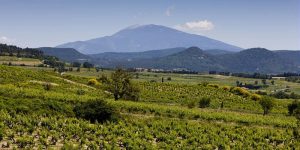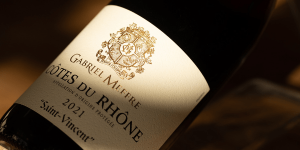2018 harvests, from vine stock to wine store!
Vines in sync
The fruits of their labour were clear to see: a significant quantity of beautifully ripe berries for all grape varieties combined. Even Grenache–a variety extremely prone to grape shatter (preventing pollination of the flowers which eventually fall off) and mildew–fared pretty well overall.
Our staff kept a close eye on the vines (the climate had been rather cruel!) and doubled their vine husbandry efforts, lifting, disbudding, and pollarding the plants as well as managing the grass which had thrived due to the rain and mild temperatures in spring.
Our Vineyard Director Antoine explains the situation well: “2018 was not only a year of extremes (a wet spring and roasting summer), the harvesting conditions in September and October were perfect: a mix of warm days, cool nights and a Mistral breeze which dried up the occasional drops of morning dew. Because of this combination of factors, the grapes we filled our stores with were of excellent quality.”
The secret to our 2018 harvests
No secret really, just a lot of hard work scrutinising our vineyards and tasting the berries. All especially important to guarantee the quality of the fruit and decide on which date to start the harvest. “This was a stand-out year because we had to be prepared to throw away our typical calendar. We began the harvest with the Syrahs in the Montmirail area of AOP Gigondas, way before our grapes in AOP Côtes du Rhône Villages Plan de Dieu, which is extremely unusual,” explains Antoine.
The Montmirail vineyards in Gigondas are home to our hundred-year-old Grenache plants which produce our iconic Gigondas “Hommage à Gabriel Meffre”. The vine stocks are only selected for harvesting when the grapes are deemed exceptional in terms of balance and ripeness.
Criteria for selecting berries
Our winery has tough standards when it comes to choosing which grapes to vinify.
One of the key criteria is, of course, the balance of flavours: the sugar-to-acid ratio has to be optimal. We are looking for what is known in Europe as ‘technological maturity’. The grape has to be sweet but also have excellent acidity and fresh fruit flavours.
A second essential criterion is phenolic balance, which is linked to the tannins and their degree of maturity. The grape skin mustn’t be too hard or too thick. As for the seeds, they should be brown, crunchy to the bite, and never astringent, hard or green to the taste.
Highlights and innovations in 2018
The harvest at Château Grand Escalion kicked off in late August, beginning with the rosés, and ended a month later with the Cabernet Sauvignon.
The introduction of our new pneumatic press meant that the juice from the berries was extracted to a much higher standard.
We also added a new product to our collection: a premium rosé made from single-vineyard wines specially blended: our Amoureuse Cuvée. “It was a year that allowed for long macerations (30 days) so we could extract the finest part of the tannins. The wines are expressive and especially fruit forward offering a wonderful balance of flavours,” announces Antoine.
At Domaine de Longue Toque, harvesting began in mid-September. “The skin of the white grapes was bright gold in colour, in particular for the Roussannes. The grape pickers were up and ready at the crack of dawn. At 500m altitude, the temperature last year was slightly warmer than the previous year – around 10°C at 6 in the morning – but still an ideal temperature for harvesting the white berries.”
The harvest finished in early October at our most delayed vineyards. “Once again, the different grape varieties presented their own characteristics, which can change from year to year. Whereas all the vinified Syrahs delivered an explosion of dark fruits and spices, the Grenaches were more reserved, not especially expressive, their typical ‘raspberry’ bite appearing later on in the vinification process.”
We are also excited to announce that we used 2,000-hectolitre open concrete vats, all fully temperature controlled, at our brand new site in Orange! The main purpose for acquiring this type of vats was to vinify our Châteauneuf-du-Pape grapes. “The wines are magnificently well-balanced, the epitome of finesse, with huge aromatic potential that promises a fine vintage.”
In the long term, our aim is to vinify small quantities of grapes picked mainly from fine terroirs in the Rhône Valley, including our single-vineyard Laurus collection.
The 2018 harvests presented our winery with an extraordinary challenge, one which we accepted and met with flying colours by working hand in hand with our staff and partners. All we need now is a little patience before we get to taste this new vintage, which still deserves our full attention until it, too, stands as a faithful reflection of our expertise and our terroirs.
Rubrics
Découvrez plus d'articles...
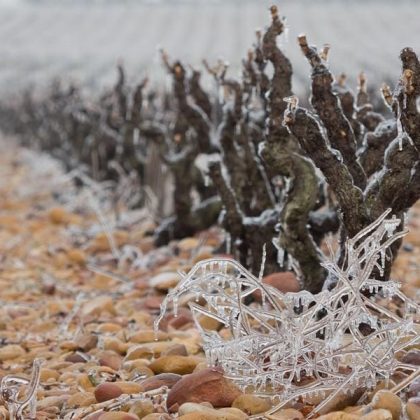
The vineyard and wine cellar in winter
What happens in the world of wine during the winter period? After the hustle and bustle of autumn, the harvests and vinification process, comes winter, a season devoted to maturation and looking after the vines.

In 2018, we will continue to strive to be a Responsible Company!
In this new year, our wish to help build a world that respects both mankind and the environment is as strong as ever. This can be seen through the number of our projects for 2018 that are closely related to our convictions as a Responsible Winery. We’re delighted to be given the opportunity to tell you about them!
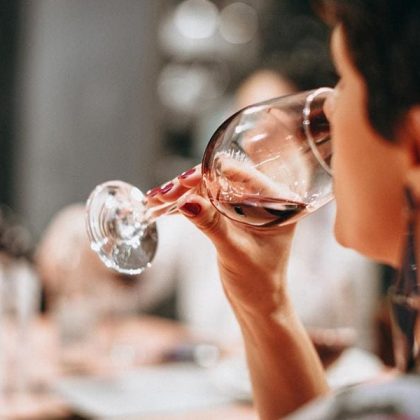
Discovering the art of pairing wine and chocolate
A morsel of white chocolate, Black Forest gâteau, pieces of stem ginger wrapped in chocolate, or Mexican chicken in chocolate sauce—all very appetising, but which wine would you serve with each one? Food and wine pairings factor in a combination of elements, such as the terroir, our powers of concentration, the circumstances of the tasting session, our sense memory and more. We guide you through some of the basic principles of this fascinating world!
